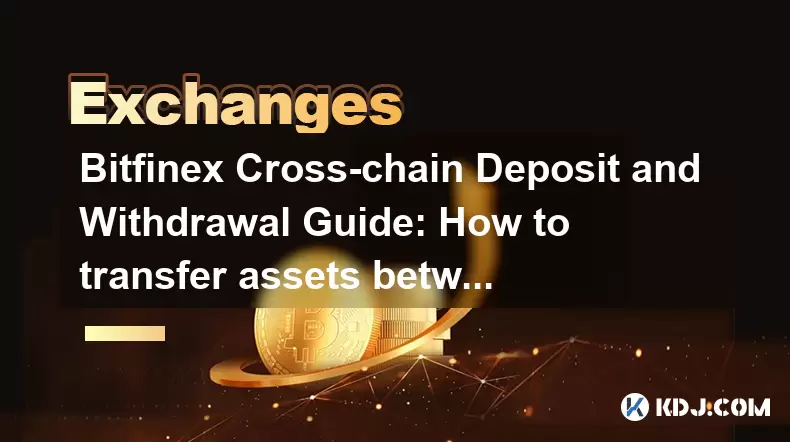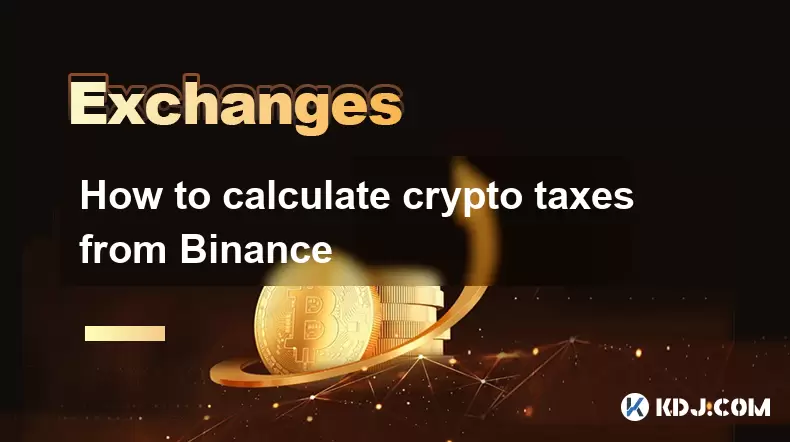-
 Bitcoin
Bitcoin $117500
2.15% -
 Ethereum
Ethereum $3911
6.19% -
 XRP
XRP $3.316
10.79% -
 Tether USDt
Tether USDt $1.000
0.01% -
 BNB
BNB $787.2
2.24% -
 Solana
Solana $175.2
4.15% -
 USDC
USDC $0.9999
0.00% -
 Dogecoin
Dogecoin $0.2225
8.40% -
 TRON
TRON $0.3383
0.28% -
 Cardano
Cardano $0.7868
6.02% -
 Stellar
Stellar $0.4382
9.34% -
 Hyperliquid
Hyperliquid $40.92
7.56% -
 Sui
Sui $3.764
7.63% -
 Chainlink
Chainlink $18.48
10.66% -
 Bitcoin Cash
Bitcoin Cash $582.1
1.88% -
 Hedera
Hedera $0.2601
6.30% -
 Avalanche
Avalanche $23.33
4.94% -
 Ethena USDe
Ethena USDe $1.001
0.02% -
 Litecoin
Litecoin $122.3
2.04% -
 UNUS SED LEO
UNUS SED LEO $8.969
-0.27% -
 Toncoin
Toncoin $3.339
0.86% -
 Shiba Inu
Shiba Inu $0.00001287
4.30% -
 Uniswap
Uniswap $10.43
7.38% -
 Polkadot
Polkadot $3.861
5.08% -
 Dai
Dai $1.000
0.02% -
 Bitget Token
Bitget Token $4.513
3.41% -
 Monero
Monero $267.7
-6.18% -
 Cronos
Cronos $0.1499
4.14% -
 Pepe
Pepe $0.00001110
5.15% -
 Aave
Aave $284.9
8.28%
Bitfinex Cross-chain Deposit and Withdrawal Guide: How to transfer assets between different networks?
Bitfinex enables seamless cross-chain transfers, allowing users to move assets between different blockchains for enhanced flexibility and efficiency in managing digital assets.
May 30, 2025 at 05:56 am

Introduction to Bitfinex Cross-chain Transactions
Bitfinex is one of the leading cryptocurrency exchanges that supports a variety of digital assets and offers advanced trading features. One of the critical functionalities provided by Bitfinex is the ability to perform cross-chain deposits and withdrawals. This feature allows users to transfer assets between different blockchain networks seamlessly. Understanding how to utilize this feature can significantly enhance your experience on the platform by providing greater flexibility and efficiency in managing your digital assets.
Understanding Cross-chain Transfers
Cross-chain transfers involve moving assets from one blockchain network to another. This process is essential because different cryptocurrencies may exist on various blockchains. For instance, Bitcoin operates on the Bitcoin blockchain, while Ethereum-based tokens exist on the Ethereum blockchain. Cross-chain transfers enable you to convert and transfer your assets between these networks, ensuring that you can use your assets across different platforms and applications.
Preparing for a Cross-chain Deposit
Before initiating a cross-chain deposit on Bitfinex, you need to ensure that you have the necessary prerequisites in place. Here are the steps to prepare for a cross-chain deposit:
- Log into your Bitfinex account: Make sure you are logged into your Bitfinex account with the necessary security measures enabled, such as two-factor authentication (2FA).
- Verify your account: Ensure that your account is fully verified. This may involve completing KYC (Know Your Customer) procedures.
- Check supported networks: Visit the Bitfinex website or app to see which networks are supported for cross-chain deposits. This information can typically be found in the deposit section of the platform.
- Prepare your wallet: Make sure you have a compatible wallet that supports the blockchain network from which you are transferring assets. For example, if you are transferring from the Ethereum network, you need an Ethereum-compatible wallet.
Executing a Cross-chain Deposit on Bitfinex
Once you are prepared, you can proceed with the cross-chain deposit. Follow these detailed steps to execute a cross-chain deposit on Bitfinex:
- Navigate to the deposit section: On the Bitfinex platform, go to the 'Deposit' section. This can usually be found in the wallet or funds area of the platform.
- Select the cryptocurrency: Choose the cryptocurrency you want to deposit from the list of available options.
- Choose the network: Select the specific blockchain network from which you want to transfer the assets. For instance, if you are depositing Bitcoin, you might choose the Bitcoin network or a compatible network like the Lightning Network.
- Generate a deposit address: Bitfinex will generate a unique deposit address for the selected cryptocurrency and network. Copy this address carefully.
- Initiate the transfer from your wallet: Open your external wallet and initiate a transfer to the deposit address generated by Bitfinex. Make sure to include any required memo or tag if applicable.
- Confirm the transaction: Follow the prompts in your wallet to confirm the transaction. Depending on the blockchain, this may involve paying a network fee.
- Monitor the transaction: Use a blockchain explorer to monitor the status of your transaction. Once the transaction is confirmed on the blockchain, Bitfinex will credit the assets to your account.
Initiating a Cross-chain Withdrawal
Withdrawing assets from Bitfinex to another blockchain network follows a similar process but in reverse. Here’s how to initiate a cross-chain withdrawal:
- Navigate to the withdrawal section: On the Bitfinex platform, go to the 'Withdrawal' section. This can usually be found in the wallet or funds area of the platform.
- Select the cryptocurrency: Choose the cryptocurrency you want to withdraw from the list of available options.
- Choose the network: Select the specific blockchain network to which you want to transfer the assets. For instance, if you are withdrawing Ethereum, you might choose the Ethereum network or a compatible network like Polygon.
- Enter the withdrawal address: Input the address of the wallet to which you want to send the assets. Make sure this address is correct and supports the selected network.
- Specify the amount: Enter the amount of cryptocurrency you wish to withdraw. Be mindful of any withdrawal fees that may apply.
- Confirm the withdrawal: Review the details of your withdrawal, including the network fee, and confirm the transaction. Bitfinex may require additional verification steps, such as 2FA, to proceed.
- Monitor the transaction: Use a blockchain explorer to monitor the status of your transaction. Once the transaction is confirmed on the blockchain, the assets will be credited to the specified wallet address.
Troubleshooting Common Issues
While cross-chain transfers on Bitfinex are generally straightforward, you may encounter some issues. Here are some common problems and how to resolve them:
- Incorrect network selection: If you select the wrong network for your deposit or withdrawal, the transaction may fail or be delayed. Always double-check the network before confirming a transaction.
- Address errors: Entering an incorrect withdrawal address can result in the loss of funds. Always verify the address before confirming the transaction. If you enter an incorrect deposit address, contact Bitfinex support immediately.
- Transaction delays: Blockchain networks can experience congestion, leading to delayed transactions. Monitor the transaction using a blockchain explorer and wait for confirmation.
- Insufficient funds: Ensure that you have enough funds in your Bitfinex account to cover the withdrawal amount and any associated fees. If you encounter an insufficient funds error, add more funds to your account or reduce the withdrawal amount.
Frequently Asked Questions
Q1: Can I perform cross-chain transfers for all cryptocurrencies on Bitfinex?
A1: Not all cryptocurrencies on Bitfinex support cross-chain transfers. You should check the specific cryptocurrency and network support on the Bitfinex platform before attempting a transfer.
Q2: Are there any fees associated with cross-chain deposits and withdrawals on Bitfinex?
A2: Yes, Bitfinex may charge fees for cross-chain deposits and withdrawals. These fees can vary depending on the cryptocurrency and the network used. Always review the fee structure before initiating a transaction.
Q3: How long do cross-chain transfers take on Bitfinex?
A3: The duration of cross-chain transfers can vary based on the blockchain network's congestion and confirmation times. Some networks may process transactions within minutes, while others could take hours or even days.
Q4: What should I do if my cross-chain transfer on Bitfinex fails?
A4: If your cross-chain transfer fails, first check the transaction status using a blockchain explorer. If the transaction is stuck or failed, contact Bitfinex support for assistance. Provide them with the transaction details and any error messages you received.
Disclaimer:info@kdj.com
The information provided is not trading advice. kdj.com does not assume any responsibility for any investments made based on the information provided in this article. Cryptocurrencies are highly volatile and it is highly recommended that you invest with caution after thorough research!
If you believe that the content used on this website infringes your copyright, please contact us immediately (info@kdj.com) and we will delete it promptly.
- Stablecoins, Hong Kong, and On-Chain Finance: Navigating the Regulatory Maze
- 2025-08-08 12:30:12
- Tron's Sell-Off Spurs Altcoin Shift: What's Next for TRX?
- 2025-08-08 08:30:12
- Euler, DeFi, and Coinbase: A New York Minute on the Latest Buzz
- 2025-08-08 12:30:12
- RUVI Presale: Is the Growth Potential Real?
- 2025-08-08 09:10:12
- Sleep Token's US Takeover: Thornhill Rides the 'Even In Arcadia' Wave
- 2025-08-08 08:30:12
- FTT Token's Wild Ride: Creditor Repayments vs. Market Drop - A New Yorker's Take
- 2025-08-08 07:10:12
Related knowledge

How to use margin trading on Poloniex
Aug 08,2025 at 09:50am
Understanding Margin Trading on Poloniex

How to use advanced trading on Gemini
Aug 08,2025 at 04:07am
Understanding Advanced Trading on GeminiAdvanced trading on Gemini refers to a suite of tools and order types designed for experienced traders who wan...

How to deposit USD on Bitstamp
Aug 07,2025 at 05:18pm
Understanding Bitstamp and USD DepositsBitstamp is one of the longest-standing cryptocurrency exchanges in the industry, offering users the ability to...

How to use the Kraken Pro interface
Aug 08,2025 at 09:57am
Understanding the Kraken Pro Interface LayoutThe Kraken Pro interface is designed for both novice and experienced traders seeking a streamlined experi...

How to find my transaction ID on Gemini
Aug 08,2025 at 12:50am
Understanding the Transaction ID in Cryptocurrency ExchangesA transaction ID (TXID) is a unique alphanumeric string that identifies a specific transfe...

How to calculate crypto taxes from Binance
Aug 08,2025 at 07:56am
Understanding Cryptocurrency Taxation on BinanceCalculating crypto taxes from Binance requires a clear understanding of how tax authorities classify d...

How to use margin trading on Poloniex
Aug 08,2025 at 09:50am
Understanding Margin Trading on Poloniex

How to use advanced trading on Gemini
Aug 08,2025 at 04:07am
Understanding Advanced Trading on GeminiAdvanced trading on Gemini refers to a suite of tools and order types designed for experienced traders who wan...

How to deposit USD on Bitstamp
Aug 07,2025 at 05:18pm
Understanding Bitstamp and USD DepositsBitstamp is one of the longest-standing cryptocurrency exchanges in the industry, offering users the ability to...

How to use the Kraken Pro interface
Aug 08,2025 at 09:57am
Understanding the Kraken Pro Interface LayoutThe Kraken Pro interface is designed for both novice and experienced traders seeking a streamlined experi...

How to find my transaction ID on Gemini
Aug 08,2025 at 12:50am
Understanding the Transaction ID in Cryptocurrency ExchangesA transaction ID (TXID) is a unique alphanumeric string that identifies a specific transfe...

How to calculate crypto taxes from Binance
Aug 08,2025 at 07:56am
Understanding Cryptocurrency Taxation on BinanceCalculating crypto taxes from Binance requires a clear understanding of how tax authorities classify d...
See all articles

























































































